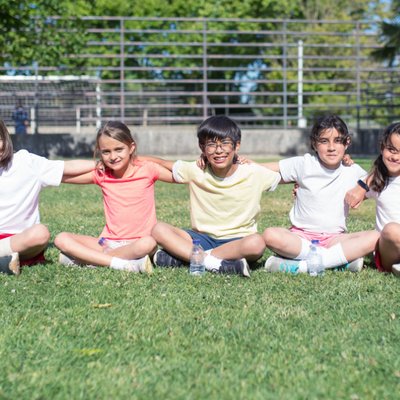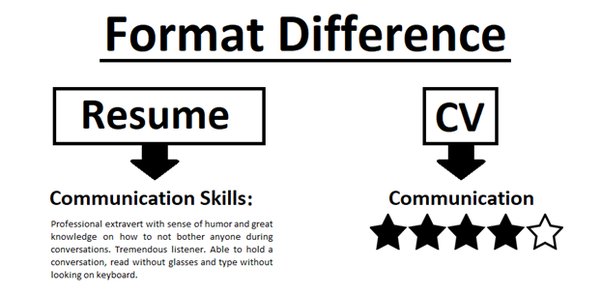Roles of Nonverbal Communication in Intercultural Interactions
Nonverbal communication plays a crucial role in intercultural interactions, impacting everything from establishing trust and understanding to conveying respect and emotion in cross-cultural settings. By using nonverbal cues such as body language, facial expressions, gestures, and tone of voice, individuals can navigate communication barriers and bridge cultural gaps, enhancing mutual understanding and effective interaction.
Successful intercultural interactions rely on the ability to interpret and adapt to nonverbal cues, as they can convey meaning and context that may differ across cultures.
Understanding Nonverbal Communication
Nonverbal communication plays a crucial role in intercultural interactions by conveying emotions, attitudes, and regulating conversation dynamics. It helps bridge cultural differences and facilitates effective communication between individuals from different backgrounds.
Definition And Importance Of Nonverbal Communication:
- Nonverbal communication refers to the exchange of information through actions, gestures, facial expressions, and other means besides spoken or written words.
- It plays a crucial role in intercultural interactions as it can convey emotions, intentions, and cultural norms that may vary across different cultures.
- Understanding nonverbal communication is essential to effectively communicate and avoid misinterpretations in intercultural contexts.
Different Types Of Nonverbal Communication:
- Body Language:
- Body language refers to the way we use our bodies to communicate, including posture, gestures, and movement.
- It can indicate confidence, interest, openness, or discomfort, among other emotions and attitudes.
- Facial Expressions:
- Facial expressions convey emotions and can vary across different cultures.
- Smiling, frowning, raising eyebrows, or narrowing the eyes can communicate happiness, anger, surprise, or suspicion.
- Eye Contact:
- Eye contact is a powerful nonverbal cue that conveys attentiveness, interest, trust, or respect.
- However, it varies across cultures, with some cultures valuing prolonged eye contact as a sign of engagement, while others may consider it disrespectful.
- Proxemics (Personal Space):
- Proxemics refers to the use of personal space and distance during communication.
- Cultural norms dictate the acceptable physical distance between individuals, and violating these norms can lead to discomfort or misinterpretations.
- Gestures:
- Gestures include hand movements, head nods, or other actions that accompany speech.
- They can enhance or clarify verbal communication, but their meanings can vary across cultures.
- Tone of Voice:
- The tone of voice conveys emotions, attitudes, and intentions.
- It includes factors such as volume, pitch, rhythm, and intonation, which can differ significantly across cultures.
- Touch:
- Touch is a nonverbal cue that varies greatly across cultures.
- Some cultures have more relaxed norms regarding touch, while others consider it inappropriate or reserved for close relationships.
Understanding and being aware of these different types of nonverbal communication is essential for effective intercultural interactions. It helps individuals navigate cultural differences, avoid misunderstandings, and build trust and rapport.
Cultural Influences On Nonverbal Communication
Nonverbal communication plays a crucial role in intercultural interactions, as cultural influences greatly impact how gestures, facial expressions, and body language are interpreted. Understanding and adapting to these cultural differences can help foster effective communication and avoid misunderstandings. Cultural sensitivity and awareness are essential in promoting successful intercultural interactions.
Intercultural Differences In Nonverbal Communication:
- Nonverbal communication is heavily influenced by cultural factors, leading to distinct differences in how people from different cultures interpret and express nonverbal cues.
- These differences can impact intercultural interactions, as individuals may misinterpret or misunderstand nonverbal signals from other cultures.
Cultural Norms And Values:
- Each culture has its own set of norms and values that shape its nonverbal communication practices.
- These norms and values determine what types of nonverbal behaviors are acceptable or preferred within a specific culture.
Cultural Display Rules:
- Cultural display rules refer to the unwritten guidelines that dictate how emotions should be expressed and displayed within a specific culture.
- These rules may influence how individuals from different cultures interpret facial expressions, body language, and other nonverbal cues.
Cultural Interpretations Of Gestures And Expressions:
- Gestures and facial expressions can have different meanings across cultures.
- A gesture that is considered positive or polite in one culture may be offensive or disrespectful in another.
Examples Of Cultural Differences In Nonverbal Communication:
- Western Cultures vs Eastern Cultures:
- Western cultures generally value direct eye contact, while Eastern cultures may consider prolonged eye contact as impolite or confrontational.
- In Western cultures, a firm handshake is seen as a sign of confidence, whereas in some Eastern cultures, a light handshake or a bow is preferred.
- High-Context vs Low-Context Cultures:
- In high-context cultures, nonverbal cues play a significant role in communication, and individuals rely on subtle gestures and body language to convey meaning.
- In low-context cultures, communication relies more on explicit verbal communication, and nonverbal cues may be less important.
- Individualistic vs Collectivistic Cultures:
- In individualistic cultures, emphasis is placed on personal achievements, and individuals may engage in more self-focused nonverbal behaviors.
- In collectivistic cultures, the emphasis is on group harmony and cooperation, leading to more nonverbal cues that reinforce social connections and hierarchy.
Impact Of Cultural Differences On Intercultural Interactions:
- Misinterpretation of Nonverbal Cues:
- Cultural differences in nonverbal communication can lead to misinterpretation of gestures, facial expressions, and body language.
- Misreading nonverbal cues can result in misunderstandings, conflicts, or even unintentional offense.
- Stereotyping and Cultural Biases:
- Cultural differences in nonverbal communication can contribute to stereotypes and biases towards other cultures.
- Stereotypes based on nonverbal cues can lead to unfair judgments and hinder effective intercultural interactions.
- Building Trust and Rapport:
- Understanding and respecting cultural differences in nonverbal communication is crucial for building trust and rapport with individuals from different cultures.
- Developing cultural competence and being sensitive to nonverbal cues can help bridge cultural gaps and foster positive intercultural relationships.
Effective Nonverbal Communication In Intercultural Interactions
Nonverbal communication plays a crucial role in intercultural interactions, allowing individuals to express emotions, convey attitudes, regulate conversations, and enhance speech production without relying solely on verbal language. It serves as a powerful tool for effective cross-cultural understanding and connection.
Developing Cultural Competence:
- Cultural competence is the ability to effectively interact with individuals from different cultures.
- It involves understanding and valuing diverse cultural beliefs, practices, and communication styles.
- Developing cultural competence helps foster positive intercultural interactions by promoting understanding, respect, and collaboration.
Cultural Self-Awareness:
- Cultural self-awareness is the recognition and understanding of one’s own cultural background, biases, and communication patterns.
- It involves reflecting on personal values, beliefs, and behaviors that may influence intercultural interactions.
- Being culturally self-aware allows individuals to adapt their communication style and be more sensitive to the cultural norms of others.
Cultural Sensitivity And Empathy:
- Cultural sensitivity is the ability to perceive and respect cultural differences without judgment or assumption.
- It requires empathy, or the ability to understand and share the feelings of others.
- Being culturally sensitive and empathetic helps create a safe and inclusive space for intercultural communication.
Cultural Adaptation And Flexibility:
- Cultural adaptation refers to the ability to adjust one’s behavior and communication style to align with the cultural norms of others.
- It involves being open-minded, flexible, and willing to learn from different cultures.
- Culturally adapting and being flexible allows for smoother intercultural interactions and reduces misunderstandings.
Strategies For Effective Nonverbal Communication:
- Active listening and observation: Actively listening and observing nonverbal cues such as facial expressions, body language, and tone of voice helps understand the underlying meaning in intercultural interactions.
- Understanding cultural norms and etiquette: Familiarizing oneself with the cultural norms and etiquette of the other culture helps avoid unintentional offense and promotes respectful communication.
- Adjusting nonverbal cues to match the context: Adapting nonverbal cues such as personal space, eye contact, and gestures to match the cultural context enhances effective communication in intercultural interactions.
Overcoming Communication Barriers In Intercultural Interactions:
- Building rapport and establishing trust: Building a connection and establishing trust through active listening, respect, and empathy helps overcome communication barriers in intercultural interactions.
- Clarifying misunderstandings: When faced with a misunderstanding, asking open-ended questions, paraphrasing, and seeking clarification helps address misinterpretations and promotes clearer communication.
- Using nonverbal cues to enhance understanding: Nonverbal cues such as nodding, smiling, and mirroring can be used to show understanding and encourage the speaker to provide additional information.
These strategies can greatly improve intercultural interactions by promoting effective nonverbal communication and fostering understanding, respect, and collaboration between individuals from different cultures.

Credit: study.com
Frequently Asked Questions On What Role Does Nonverbal Communication Play In Intercultural Interactions
How Do Intercultural Differences Affect Nonverbal Communication?
Intercultural differences greatly impact nonverbal communication. Touch, for instance, varies among cultures. While some societies find it acceptable to touch during communication, others consider it inappropriate. In Asia, bowing is often used as a substitute for handshakes. Additionally, eye contact norms differ across cultures, with some cultures valuing direct eye contact as a sign of respect, while others see it as disrespectful.
Posture, gestures, and facial expressions also have varying meanings in different cultures. These differences in nonverbal communication can lead to misunderstandings and misinterpretations between individuals from different cultures. It is important to be aware of and sensitive to these differences to foster effective cross-cultural communication.
What Role Does Non-Verbal Communication Play In Social Interaction?
Non-verbal communication plays a vital role in social interaction. It helps to express emotions, convey attitudes, regulate affect, and facilitate conversation. Nonverbal cues are essential for understanding and interpreting the meaning behind verbal messages. They include body language, facial expressions, eye contact, gestures, and tone of voice.
These cues provide additional layers of information that complement and reinforce verbal communication. For example, a smile and a warm tone of voice can indicate friendliness, while crossed arms and a stern expression may convey dominance or hostility. Non-verbal communication acts as a powerful tool to enhance social interactions, build rapport, and establish meaningful connections with others.
By paying attention to nonverbal cues, we can gain a better understanding of people’s feelings, intentions, and attitudes, improving our overall communication effectiveness.
What Is The Impact Of Non-Verbal Language Barriers On Intercultural Communication?
Non-verbal language barriers have a significant impact on intercultural communication. These barriers occur when individuals from different cultures misinterpret or fail to understand non-verbal cues such as body language, facial expressions, gestures, and tone of voice. These cues play a crucial role in communication as they convey emotions, attitudes, and intentions.
When non-verbal cues are misinterpreted, it can lead to misunderstandings, confusion, and even conflict between individuals from different cultures. For example, a gesture that is considered respectful in one culture may be perceived as rude or offensive in another culture.
Similarly, facial expressions that convey different meanings in different cultures can result in miscommunication. To overcome these barriers, individuals need to be aware of and sensitive to the non-verbal cues of other cultures. Developing cultural competence and understanding the cultural norms and customs of others can help bridge the gap in intercultural communication and promote effective and respectful communication.
Is Nonverbal Communication A Barrier To Intercultural Communication?
Nonverbal communication can indeed be a barrier to intercultural communication. Different cultures have their own nonverbal communication cues, such as body language, facial expressions, gestures, and eye contact, which may vary significantly. These cultural differences can lead to misunderstandings and misinterpretations between individuals from different cultures.
For example, a certain gesture that is considered rude or offensive in one culture may have a completely different meaning in another culture. Additionally, the use of personal space and physical touch can vary across cultures, leading to discomfort or confusion in intercultural interactions.
Therefore, individuals must be aware of and sensitive to these cultural differences in nonverbal communication to effectively communicate and bridge the intercultural gap. By recognizing and respecting these differences, individuals can minimize communication barriers and foster better understanding and collaboration in intercultural settings.
Conclusion
Nonverbal communication plays a crucial role in intercultural interactions, shaping our understanding and connection with one another. Through nonverbal cues such as facial expressions, gestures, and body language, we are able to express emotions, convey attitudes, regulate conversations, and enhance speech production.
However, it is important to recognize that different cultures have varying interpretations and norms regarding nonverbal communication. Touch, for example, can be seen as appropriate or inappropriate depending on the cultural context. This highlights the significance of cultural sensitivity and awareness in intercultural interactions.
By being mindful of nonverbal cues and adapting our communication style to respect and understand different cultural norms, we can bridge the gap and foster effective and meaningful connections across cultures. As global interactions continue to increase, recognizing and valuing the role of nonverbal communication becomes even more essential in building successful intercultural relationships.




